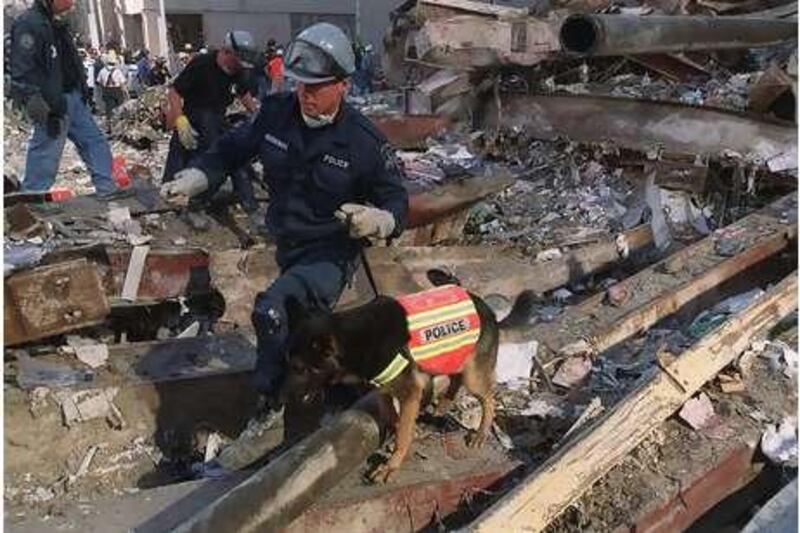NEW YORK // Trakr, a German shepherd who rescued one of the last survivors from the rubble of the September 11 attacks, is to be cloned in South Korea this year. James Symington, Trakr's California-based owner and a former Canadian police officer, won a competition held by BioArts International, a California biotech company, after submitting the story of Trakr's heroics. "No dog can replace Trakr. Our experiences together have shaped who he is, just as they have shaped who I am," said Mr Symington. "But if Trakr's clone has even 70 per cent of his intelligence and amazing drive, then my goal is to put him into service as a search and rescue dog - and I'll dust off my gear as well."
Cloning of animals remains highly controversial but appears to be taking its place as another service offered to wealthy pet-lovers as well as to livestock keepers and breeders. Trakr will be cloned free of charge by BioArts, which will also sell five dog-cloning slots in a promotional, online auction. Bids in the auction, which were to be completed by 11pm last night in California, started at US$100,000 (Dh367,000).
BioArts says it has the sole, worldwide licence for the cloning of dogs, cats and endangered species although it has been in an intellectual property dispute with RNL Bio, a South Korean genetics company. BioArts said its licence applies to somatic cell nuclear transfer cloning, which was patented by the Roslin Institute in Scotland. The institute produced Dolly the sheep 12 years ago. Mr Symington and Trakr drove down from their former home in Canada and arrived at Ground Zero on Sept 12 2001.
"Trakr picked up the scent of a live person. I called over a search team and moved on with renewed hope to continue their search for survivors," he said. "Rescue workers later confirmed that a woman was pulled alive from the debris. She is believed to be the last human survivor." Mr Symington later became embroiled in a dispute with the Halifax police, as he was supposed to be on sick leave at the time. He now lives in Los Angeles and is an actor and dog-trainer.
His story touched the entire staff at BioArts, said Lou Hawthorne, the company's chief executive officer. "Even if there was no 9/11 connection, Trakr's work has had significant social impact and with the police found hundreds of people, criminals and stolen property." A number of steps will be involved in the cloning of 15-year-old Trakr, who suffers from a degenerative disease and can no longer walk. Firstly, his DNA will be extracted, stored in liquid nitrogen and sent to BioArts' partner company in South Korea. An egg extracted from a dog in oestrus will be enucleated - that is, the maternal cells will be removed.
Trakr's DNA will then be transferred to the egg and an electro-mechanical "jump-start" applied to make the egg begin cellular reproduction. A recipient dog will give birth to the new Trakr after 63 days' gestation. Mr Hawthorne said the physical resemblance between Trakr and his clone would be as close as that between identical twins. Personality, which depends more on upbringing, would become apparent after about six months and beyond the puppy stage.
"Intelligence and temperament are genetic," he said. "The new Trakr will be raised and trained in the same way so we should see performance at a comparable level." Mr Hawthorne's dog, Missy, was the first dog to be commercially cloned last year by BioArts and Sooam Biotech Research Foundation of South Korea. "She is now about six-and-a-half-months old and we are starting to see strong behavioural similarities with our old dog," he said.
@Email:sdevi@thenational.ae





